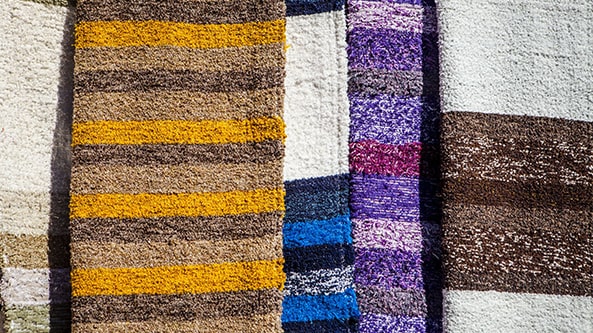Spanish Rugs

If you’re thinking back to rug making traditions, you can’t go back much further than Spain, where rug weaving has long been a tradition.
Spanish Rug History
Spaniards were weaving rugs on the Iberian Peninsula at least as far back as the 8th century. Weaving rugs and creating tapestries were considered the job of noble Spanish ladies, and many works of art are due to their diligence.
Simply stated, the Spaniards got really good at carpet weaving, and the colors in their carpets were beyond beautiful, with colors like oxblood, burnished copper, gold, soft ivory and verdant green. The colors picked up the brilliance and the textures of the Spanish landscape and were prized everywhere that Spanish goods were traded.
Of course, with the influx of other cultures, the Spanish technique of making rugs evolved. The Berbers, Jews, Christians and Muslims brought their own techniques into Spain, and the result was a wildly diverse array of rug making techniques, all of which became synthesized into what we now know as Spanish carpets.
How a Spanish Rug Looks Like
Today, Spanish carpets are an eclectic mix of various European designs, and they’re prized in various international markets. Although what we might have originally thought of as “Spanish” carpets are now more of a mix of various cultures, they’re still valued worldwide and highly prized.
Some Spanish rugs are housed in museums today. They include not just examples from the 1900s and the early part of the 20th century, but contemporary art forms as well, all of which are highly desirable to investors and collectors.
Spanish Rug Names
An Alcaraz rug is a beautiful antique. They begin their history in Spain, and have European designs, rather than the popular middle eastern ones of the era. Their shapes are mainly of nature and animals and they make gorgeous additions to any collection.
Alpujarra rugs hail from the Alpujarra mountain area, and are Spanish, as well. They usually contain only a few colors, and are best suited for wall hanging, as their linen structure is more delicate than other fabrics. They are both intriguing and historical works of art.


